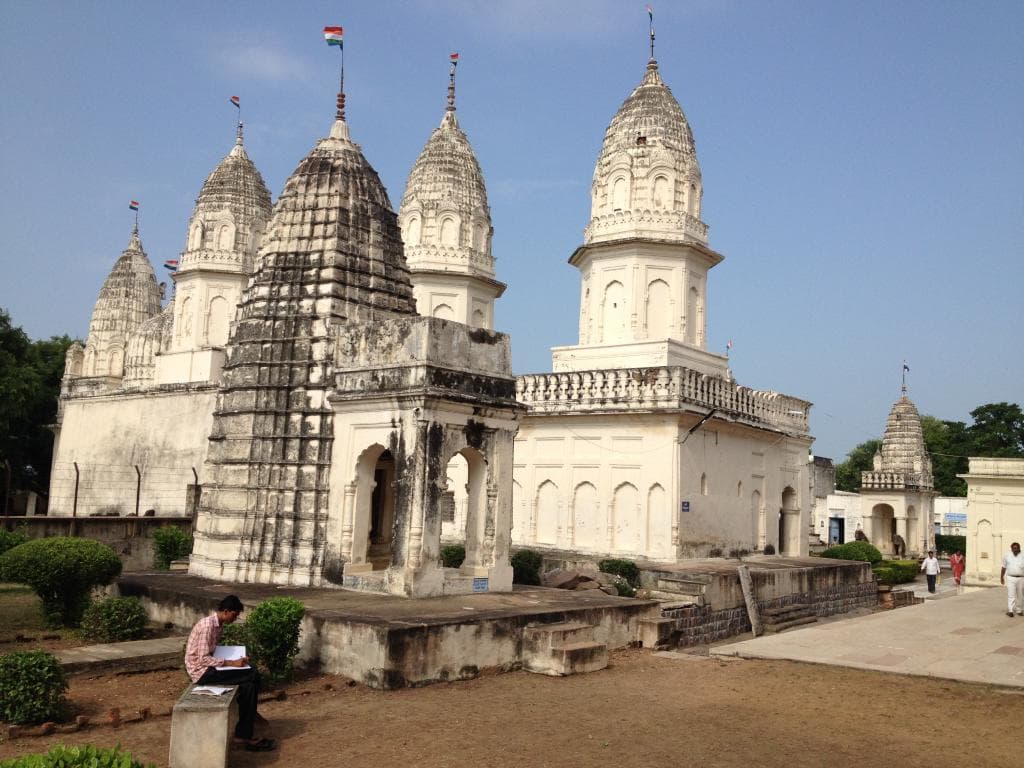
Shantinath Temple
Sacred Jain pilgrimage sites dedicated to Lord Shantinath, known for ancient idols, serene ambiance, and intricate architecture.
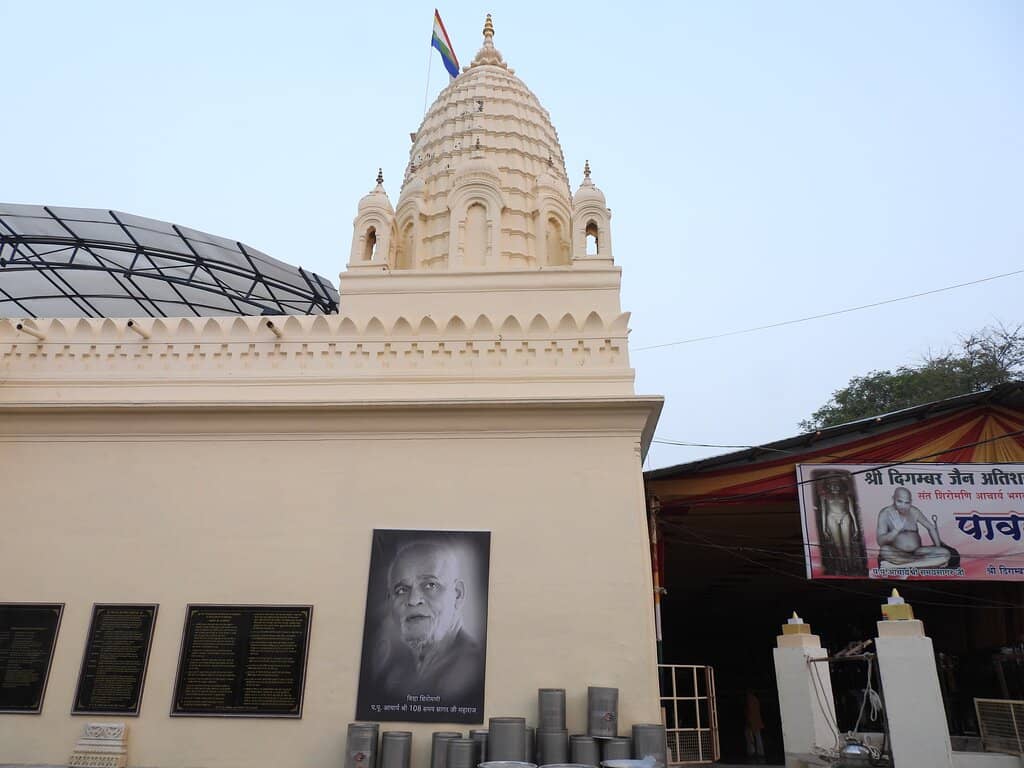
Highlights
Must-see attractions
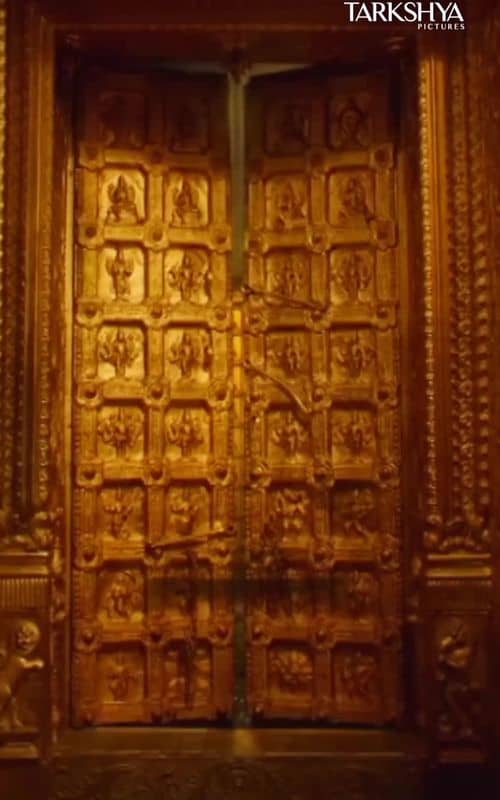
Social
From TikTok & Reddit
Best Time
Fewer crowds, serene atmosphere

Shantinath Temple
Best Time
Fewer crowds, serene atmosphere

Highlights
Must-see attractions
Sacred Jain pilgrimage sites dedicated to Lord Shantinath, known for ancient idols, serene ambiance, and intricate architecture.
"A divine temple dedicated to Lord Shantinath, the idol is said to be more than 1000 years old..."
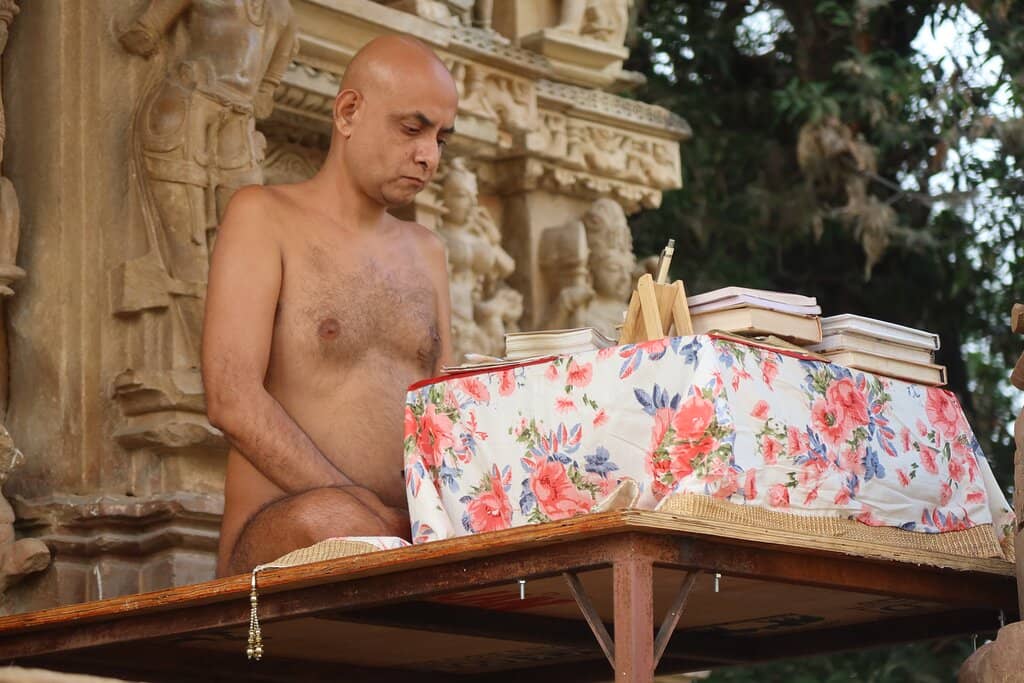
Modest Dress Code
Always wear respectful, covering clothing. :pray:
Footwear Removal
Remove shoes before entering temple premises. :athletic_shoe:
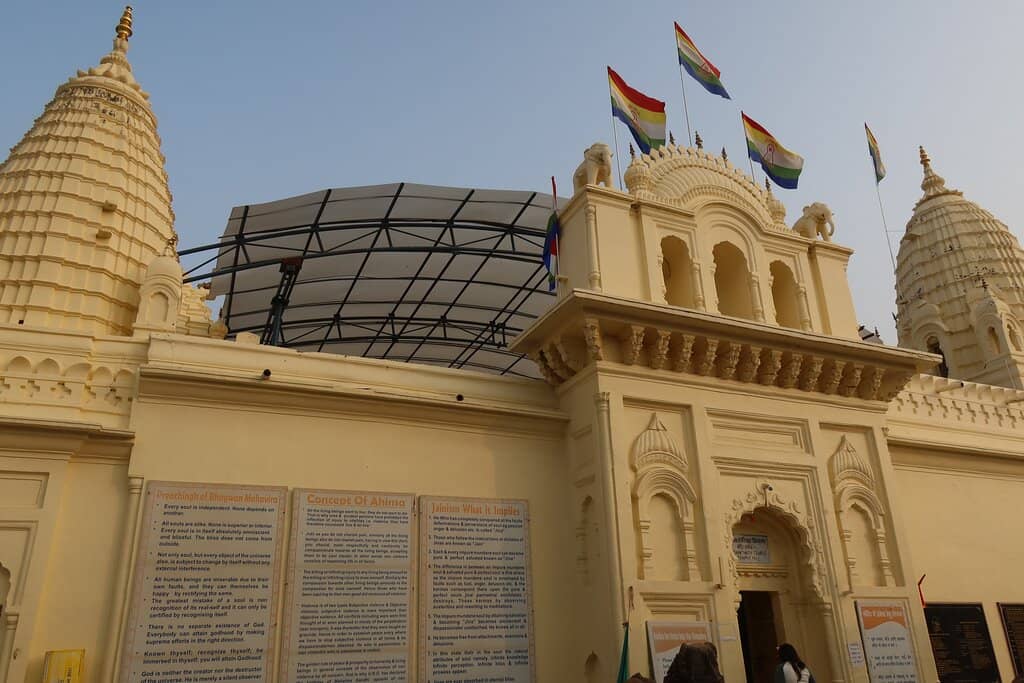
Highlights
Discover the most iconic attractions and experiences
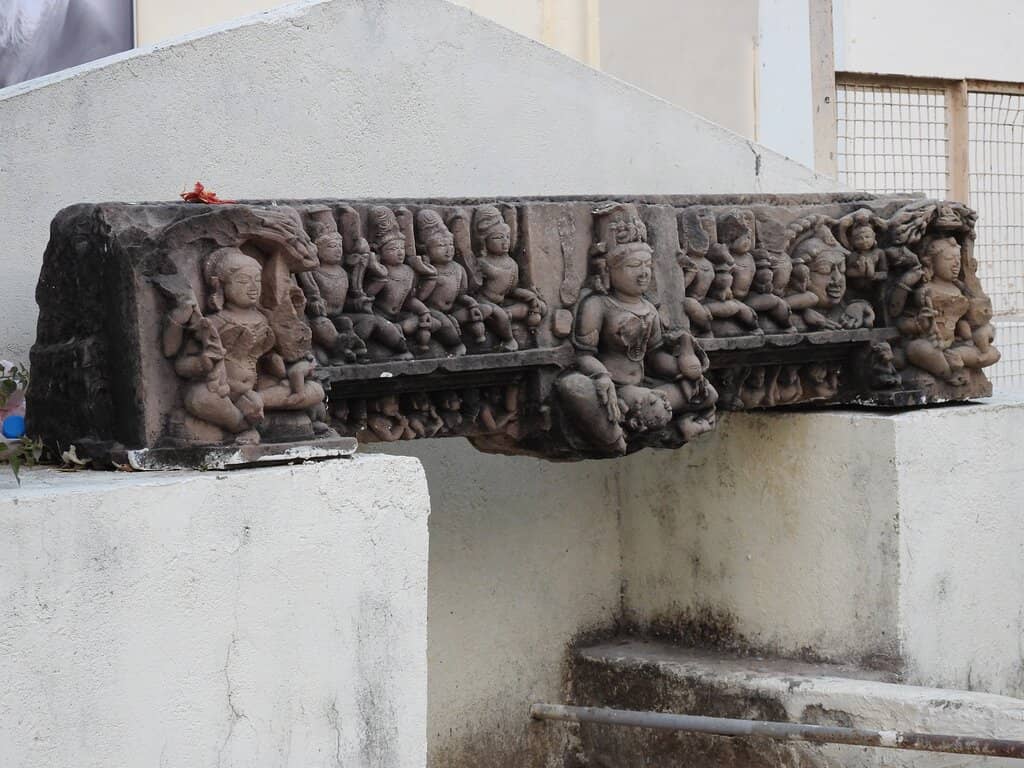
Ancient Idols
Main Sanctuary
Marvel at ancient, often colossal, idols of Lord Shantinath, some over a thousand years old.
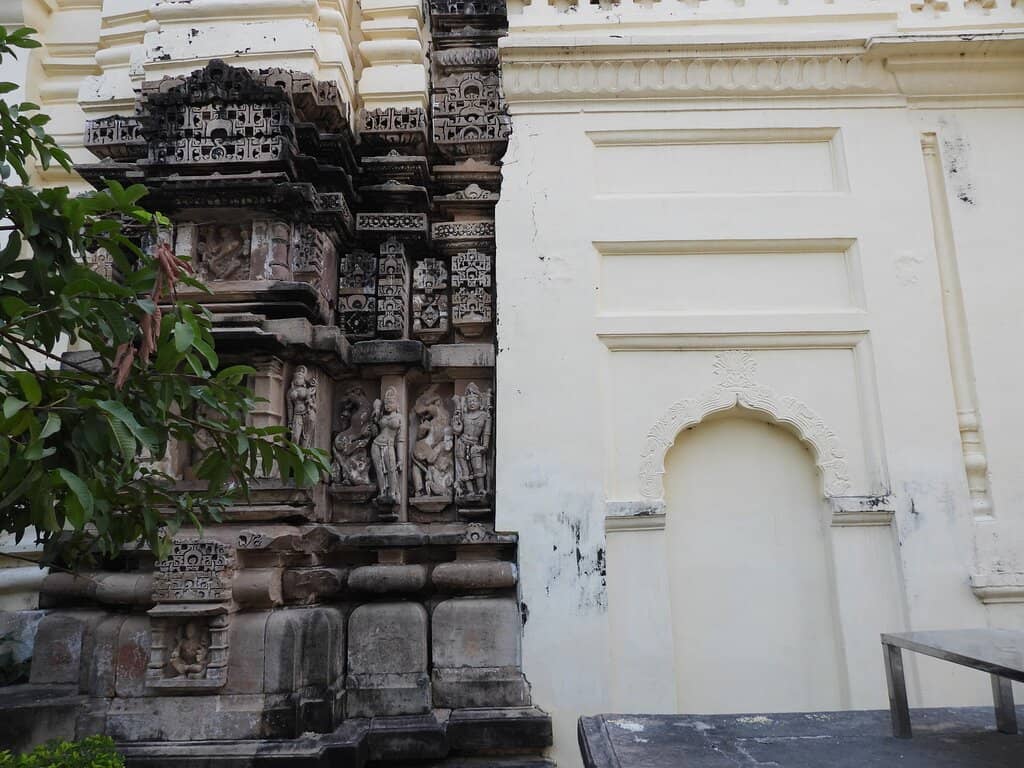
Intricate Architecture
Various Temples
Admire the detailed carvings and unique architectural styles, reflecting centuries of craftsmanship.
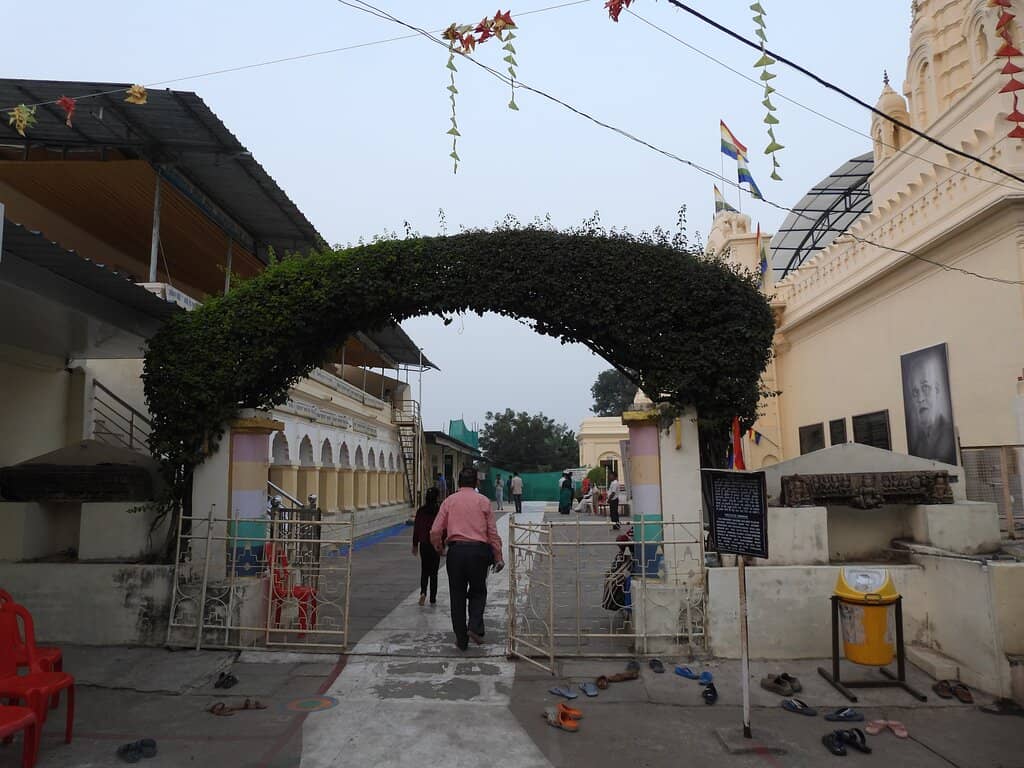
Spiritual Ambiance
Temple Complex
Experience profound peace and devotion in these sacred spaces, ideal for meditation and reflection.
Plans like a pro.
Thinks like you
Planning Your Visit
Timing Your Visit
Respectful Attire & Conduct
Best Times
Insider Tips
from TikTok, Instagram & Reddit
Modest Dress Code
Always wear respectful, covering clothing. :pray:
Footwear Removal
Remove shoes before entering temple premises. :athletic_shoe:
Photography Rules
Check for restrictions before taking photos. :camerawithflash:
Pilgrimage Sites
Many are active pilgrimage sites; be mindful of devotees. :peopleholdinghands:
Tips
from all over the internet
Modest Dress Code
Always wear respectful, covering clothing. :pray:
Footwear Removal
Remove shoes before entering temple premises. :athletic_shoe:
Photography Rules
Check for restrictions before taking photos. :camerawithflash:
Pilgrimage Sites
Many are active pilgrimage sites; be mindful of devotees. :peopleholdinghands:
What Travellers Say
Reviews Summary
Visitors consistently praise Shantinath temples for their profound spiritual ambiance, ancient idols, and intricate architecture. Many find the sites to be exceptionally peaceful and well-maintained, offering a deeply satisfying experience for devotees and history enthusiasts alike. Some minor drawbacks include potential crowds during festivals and the need for strict adherence to dress codes.
"Shanthinatha Temple.
This is the principal Jain shrine at Khajuraho. This temple complex, with many small shrines, consists of components of older temples and sculptures from 1027 CE, and earlier. The main sanctuary houses a 4.3 m polished icon of a standing Shantinatha bearing a dedicatory inscription dated 1027 CE. An interesting twelfth century sculpture of dancing kshetrapala is present at the entrance to the sanctuary."
Veludharan
"This temple is located in group comprising the Parasvanatha, Adinatha besides numerous modern shrines, some of which stand on the ruins of old shrines, while the rest are built partly with old material and display old images. The temple of Santinatha, which is the principal place of Jaina worship, enshrines a colossal (4.5 m high) image of Adinatha, on the pedestal of which exists a dedicatory inscription dated A.D. 1027-28, now hidden under plaster. Drastically renovated, this temple has an old nucleus with an oblong enclosure of shrine-cells, typical of the medieval Jaina architecture, and displays many ancient sculptures of which the one representing Jaina’s parents is remarkable for its artistic execution. (Information from ASI)"
Vikas Singh
"Shantinatha temple Śāntinātha Mandir is a Jain temple located among the Jain temple cluster in eastern Khajuraho in Madhya Pradesh, India. While its main deity is the Jain tirthankara Shantinatha, it includes 18 shrines with numerous Jain images.
The temple has been classified as a Monument of National Importance by the Archaeological Survey of India. This temple is part of UNESCO World Heritage Site along with other temples in Khajuraho Group of Monuments.
The temple incorporates two Chandella period shrines, along with fragment of other Chandella period temples. The present structure may have been constructed in 1870 CE, when a Gajarath festival was organized by Kanchhedtilal Jain of Nagaur marking a renewal of the site accompanied by installations of new images, as indicated by the inscriptions.
The pedestal of the 12 foot Shantinath image in the Shantinatha temple bears an inscription dated Samvat 1085 (1027-28 CE) mentioning the installation by Chandradeva, the son of Thakur Devadhar.. The inscription is now hidden under plaster. The original Shantinatha temple has been incorporated the 19th century structure, and is now the main centre of Jain worship in Khajuraho."
Think Wisely
What People Like
What People Dislike
Frequently Asked Questions
🚇 🗺️ Getting There
The Shantinath Temple in Khajuraho is accessible by road, with buses and taxis available from the city center. The nearest railway station is Khajuraho, and the nearest airport is also Khajuraho Airport.
To reach the Shantinath Jain Temple in Ramtek, Nagpur, you can take a bus or taxi from Nagpur city. The temple is located about 2.5 km from the Ramtek Gad Mandir.
Accessibility varies by location. Temples in major cities like Delhi are generally well-connected by public transport. For more remote locations, private vehicles or taxis might be necessary.
For Shantinath temples in Rajasthan, such as in Jhalrapatan or Mahavir Ji, you can typically reach them via bus services connecting to nearby towns, followed by local transport.
Inter-city travel between different Shantinath temples often involves trains or buses. For local travel within a temple complex or nearby attractions, auto-rickshaws or taxis are common.
🎫 🎫 Tickets & Entry
Entry to most Shantinath temples is generally free, as they are active places of worship and pilgrimage. However, donations are always welcome to support maintenance.
Visiting hours can vary. Many temples are open from early morning to evening, but it's advisable to check specific timings, especially during festivals or for certain rituals.
Advance booking is typically not required for general visits to Shantinath temples. However, if you are part of a large group or planning a special event, it's good to inquire beforehand.
Yes, some areas within the temple complex might be restricted to priests or for specific religious ceremonies. Always follow signage and instructions from temple authorities.
Yes, visiting during festivals can be a unique experience, but expect larger crowds. It's best to plan well in advance and be prepared for a more bustling atmosphere.
🎫 🧭 Onsite Experience
Lord Shantinath is the 16th Tirthankara in Jainism, symbolizing peace and tranquility. His temples are centers of spiritual solace.
The Shantinath Temple in Khajuraho is part of a UNESCO World Heritage Site and features ancient sculptures, including a 4.3m polished icon of Shantinatha dated 1027 CE.
Some legends speak of lamps burning for centuries without oil and flowers reappearing far away, highlighting the mystical nature of these sites.
You can find intricate sculptures of various Jain Tirthankaras, deities, and mythological figures, showcasing rich artistic heritage.
Yes, the architecture and spiritual ambiance make it a great spot for photography, but always be mindful of any restrictions.
🍽️ 🍽️ Food & Dining
Many temple complexes offer 'prasadam' (blessed food) or have 'bhojanalayas' (community kitchens) serving simple vegetarian meals.
Yes, Khajuraho has several restaurants offering local and North Indian vegetarian cuisine. It's advisable to stick to vegetarian options out of respect for Jain traditions.
Jain temples primarily serve pure vegetarian food, often without onion or garlic, adhering to strict dietary principles.
While Jain food is inherently vegetarian, it's always good to communicate any specific dietary needs (like allergies) if ordering from external eateries.
Yes, it is generally permissible to eat outside the temple premises, but many visitors prefer to dine at places that maintain vegetarian standards.
📸 📸 Photography
The intricate carvings, the main idol, and the overall temple architecture offer excellent photographic opportunities. Look for unique angles and details.
Photography might be restricted inside the main sanctum or specific prayer halls. Always look for signage or ask temple staff for guidance.
Early morning or late afternoon light can be ideal for capturing the temple's beauty without harsh shadows.
Tripod usage may be restricted, especially during peak hours or in sensitive areas. It's best to check with the temple administration beforehand.
Focus on architectural details, the serene expressions of the idols, and the spiritual atmosphere. Capturing the scale of the idols can also be impactful.
For Different Travelers
Tailored advice for your travel style
👨👩👧 Families with Kids
🧘 Spiritual Seekers
🏛️ History & Architecture Enthusiasts
Deep Dives
In-depth insights and expert knowledge
The Mystical Legends of Shantinath Temples
These stories, passed down through generations, contribute to the mystical aura of Shantinath temples, drawing pilgrims and curious visitors alike. They underscore the deep faith and reverence associated with these sacred sites, making a visit not just a cultural experience but also an encounter with the extraordinary. The high altitude at which some of these temples are located, like the one mentioned at 3000 feet, further enhances their sense of remoteness and spiritual significance.
Architectural Marvels and Historical Significance
In Khajuraho, the Shantinath Temple is a significant part of the UNESCO World Heritage Site, incorporating elements from older Chandella period temples and sculptures dating back to 1027 CE. While the present structure may have been renovated in the 19th century, its nucleus and many ancient sculptures, including a remarkable depiction of Jain's parents, are preserved. The intricate craftsmanship, as seen in the Shree Shantinath Mahadev Temple in Mundra, Gujarat, tells sacred stories through every carving and stone, highlighting a deep connection to heritage and spirituality.
The Spiritual Heart of Jain Pilgrimage
Beyond the main deity, these complexes often house shrines dedicated to other Tirthankaras and Jain saints, making them comprehensive centers of Jain worship. The presence of foot carvings of revered Acharyas, like Aacharyashri Shantisagarji, adds another layer of sanctity to these sites. For Jains, visiting these temples, especially during festivals like Paryushana Mahaparv, is a profound spiritual practice, reinforcing their connection to their faith and heritage.
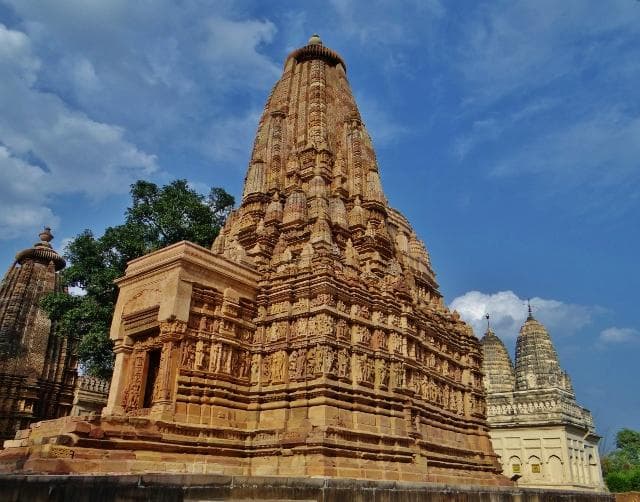

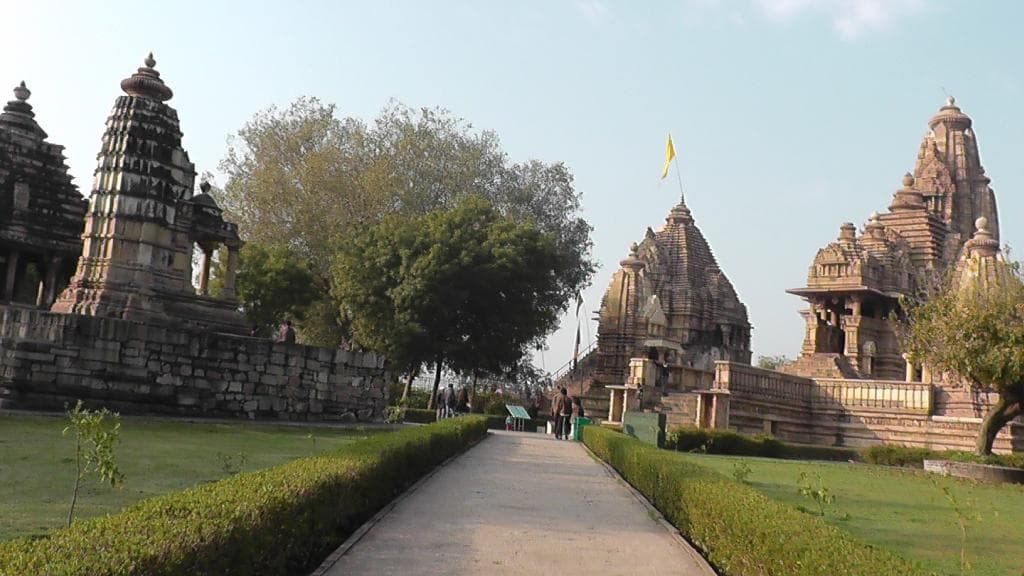
Social
from TikTok, Instagram & Reddit